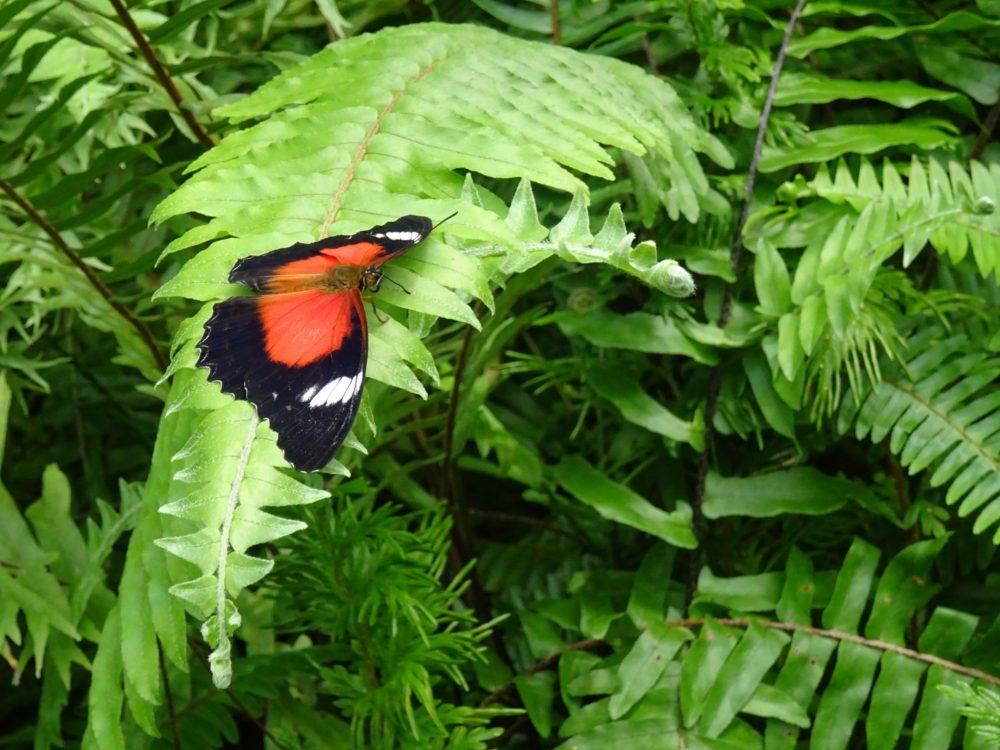By Neena Bhandari
New Delhi, 01.11.1995 (IPS): While the world tries hard to stop poachers from wiping out tigers and elephants in the wild, the threat from collectors to butterflies — a crucial link in the food chain — has been ignored.
“These delightful creatures may soon disappear,” warns Virendra Singh, an environmentalist. “Foreigners visiting the country on tourist visas are indiscriminately catching and smuggling out butterflies.”
Four large cartons containing some 15,000 moths and butterflies were seized recently from two Germans, Herman Heinrich and Weigert Ludwig. The collection included 400 rare and endangered species of butterflies, carefully packed in small plastic sachets with codes indicating where each was caught.
The Germans said the insects were being taken out of the country for research purposes, a claim that Singh rejects.
The butterflies were from Shey, a protected area in the Indian Himalayas. “The collectors violated the Wildlife Act of India and the Treaty on the Conservation of Biodiversity,” he fumes.
Endangered species are protected under Indian laws, but no action was taken against the Germans and the case was dropped. Asked why, a senior forest official said, “Germany is assisting several forest development projects and we do not want such small matters to come in our way.”
The insects may be small but there is no denying that in the high Himalayas where bees stay away because of the altitude, countless numbers of butterflies play a key role in pollination.
But the winged insects are threatened by commercial collectors who have zeroed in on the mountains of South Asia where wildlife officials are preoccupied with bigger battles to save the giants in the animal kingdom.
Villagers are being offered the rupee equivalent of 100 dollars a day to trap these winged beauties that flit from flower to flower. A trapper could get as much as 75 dollars for a single butterfly of the rare Parnassius Charltonius species.
On the international market butterflies sell for exorbitant prices. While common varieties sell for up to 15 dollars per specimen, the exquisite Parnassius Maharaja, popularly called maharaja or king, could fetch more than 110 dollars.
The need for a constant supply is fueled by their short life span of two weeks to six months. Butterflies are trapped generally in July and August in nets and then immediately placed between folded sheets of paper.
A fortnight later, a chemical is injected into their delicate thorax, which ensures their survival for up to two months. Within two to three weeks of their capture, the butterflies are with their buyers in foreign countries.
Demand for live butterflies is only growing with private collectors in Japan, Europe and the US charging visitors hefty fees to view their collections. One of the world’s largest collections is in Penang, Malaysia.
Over the years, the equipment for trapping butterflies has become more and more sophisticated. Hand-held nets have been replaced by the ‘Malaise Trap’, though some trappers still use rotting fruit to attract the insects.
“Chasing butterflies is not an easy task, especially in oxygen-deficient high altitude passes,” says Bhawani, a trapper who lives in Kulu in the Himalyan state of Himachal Pradesh.
The market for butterflies is not just in live specimens. Damaged butterflies are converted into ornaments or laminated on plastic table cloths, ash trays, mats and sold to tourists.
The world’s major exporters of butterflies are Taiwan, Brazil, the Central African Republic, Madagascar, Malaysia, Mexico, Papua New Guinea, Philippines, Peru, India, Costa Rica, France, Japan and Sri Lanka. Taiwan alone trades in about 90 species, while Malaysia sells some 100 species and Madagascar 60 species.
India has 11 recorded families of butterflies, of which according to scientists 100 species are endangered. However, the sale of butterfly-studded handicrafts continue in state-run shops, particularly in the country’s north-east provinces.
In the north-eastern town of Shillong, which boasts of one of the biggest private collections, butterfly trapping is being promoted as an income-generating activity. People are being trained to trap butterflies and paste them on plates.
Singh, who has submitted a report on the dangers facing the harmless butterfly to the World Wide Fund for Nature-India, would like the authorities to wake up before rampant trapping wipes out the insects in the mountains.
Another environmentalist suggests laws should be amended and butterfly habitats in the high altitude alpine passes and other remote areas declared protected areas so that the use of chemicals and the movement of tourists can be regulated.
But this is all a bit far-fetched for now. Butterflies have yet to catch the eye of policy makers who short-sightedly think insects breed fast and can never be on the brink of extinction. Yet, experts here say if we have to protect the tiger, we must begin at the bottom of the food chain.
© Copyright Neena Bhandari. All rights reserved. Republication, copying or using information from neenabhandari.com content is expressly prohibited without the permission of the writer and the media outlet syndicating or publishing the article.




